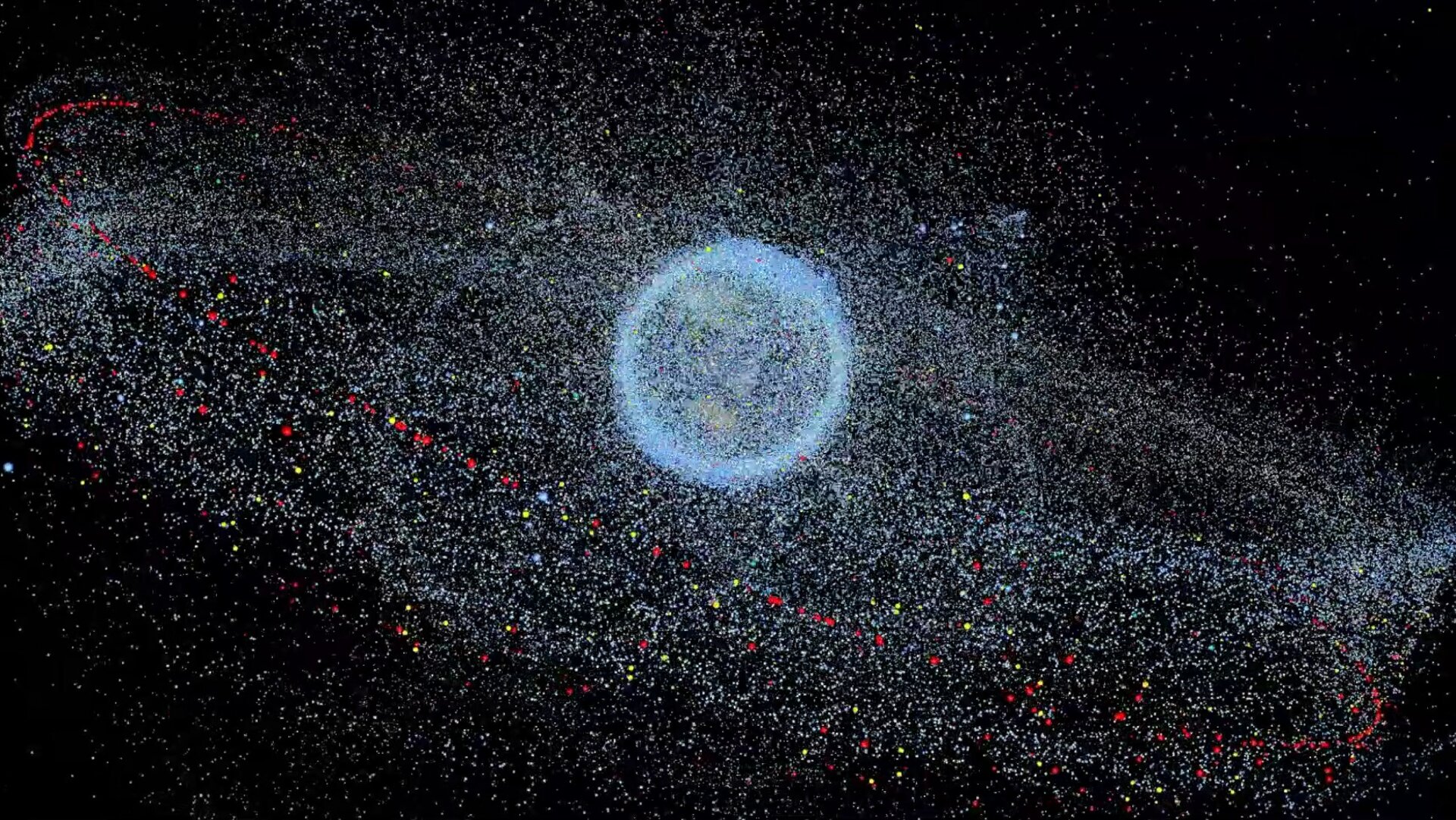Latest News

European Space Agency representation of space debris. Photo: ESA
The Federal Communications Commission approved in September a new regulation where all non-functional Low-Earth Orbit (LEO) satellites have to be deorbited no later than five years after their decommission. Prior to that new rule, deorbiting out-of-duty satellites was a task that could take up to 25 years. A stricter modification on deorbiting was expected by the space industry, and seemingly inevitable due to the imminent deployment of several satellite networks, which could exponentially increase the risk of collisions if future units are not removed from their orbits.
As of today, over 34,000 manmade objects bigger than a tennis ball are orbiting Earth, according to the Space Surveillance Network. Most of them are located within a very narrow belt of altitudes and position. Around 11,000 of those objects are “uncontrolled.” With those numbers in hand, collisions between LEO satellites are no longer sci-fi literature. The first collision between satellites happened in 2009, when an Iridium satellite and a Russian military satellite collided over the sky of Siberia. In 2019, India tested an anti-satellite missile, which effectively hit its target but caused a costly collateral: an estimated 400 pieces of space debris, some of them still in orbit. The ISS is also mastering the art and science of maneuvering — three times so far in less than four months — to avoid impact with debris from other satellites. These incidents prove that space debris is becoming a serious threat.
It’s clear now for us that once LEO satellites have accomplished their mission, they can’t be left on their own in space. In the same way that we should leave no trace of our waste after a picnic, space companies must apply advance planning for deorbiting their satellites to ensure that the space environment remains accessible for future generations. The space our LEO satellites orbit is as finite as any other resource on Earth.
The FCC’s regulations require satellite operators to submit a deorbit plan prior to launch and take steps to deorbit the satellite within five years of the end of its operational life, so it’s clear that regulations like that are the right path to help mitigate the risk of collisions and ensure the space environment is kept as clean as possible.
It’s also clear that the FCC regulation came at the right time. The previous one came into effect when the available technology and cost implications made debris recollection and satellite downgrading a near impossible task. Thanks to the latest innovations in reusable rockets and the boom of nanosatellites, which are easier to build, cheaper to launch and more affordable to bring back home, a five-year span of non-function while orbiting is more than reasonable, especially since companies and state powers plan to launch tens of thousands of nanosatellites in different constellations. These technological advancements bring the collateral of potentially severe congestion of the space, if unmanaged.
Furthermore, any industry is traditionally reluctant toward new regulations, so strong space debris enforcement is going to be good for the business. LEO satellite constellations need constant upgrades, and giving the users the latest technology in communications or surveillance will give a competitive advantage to those companies who are performing at the top of their markets.
Stricter regulation on space debris was expected due to the accessibility of space, the latest events with collisions between LEO satellites and the need to keep our space clean for the safety and security of everybody. Naturally, the FCC had to take the first step. The global space industry is looking forward now, waiting for other countries to take a similar step for their companies, which is likely to happen. And, since nanosatellite networks will be in constant need of system upgrades to fulfill the needs of the market, the forecast is that competitiveness will soar and new actors — some of them brand new and others coming from industries like software, telecoms or hardware, are going to enrich our ecosystem.
 Jaume Sanpera is the founder and CEO of Sateliot. He founded Sateliot in 2018 and currently leads its innovation and business strategy. Since 90 percent of the world is not connected, Jaume uses his telecom-savvy mindset to fulfill Sateliot’s mission of enabling global mobile coverage. Sateliot uses its constellation of nanosatellites to assist mobile operators in covering remote areas and also to connect 5G IoT devices with its patented technology.
Jaume Sanpera is the founder and CEO of Sateliot. He founded Sateliot in 2018 and currently leads its innovation and business strategy. Since 90 percent of the world is not connected, Jaume uses his telecom-savvy mindset to fulfill Sateliot’s mission of enabling global mobile coverage. Sateliot uses its constellation of nanosatellites to assist mobile operators in covering remote areas and also to connect 5G IoT devices with its patented technology.
Get the latest Via Satellite news!
Subscribe Now